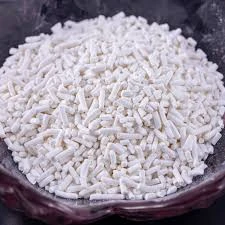
e141 food additive
Understanding E141 The Food Additive
Food additives play a vital role in the preservation, flavor enhancement, and visual appeal of many processed foods. Among these additives, E141 stands out as a commonly used compound, specifically known as copper complexes of chlorophyll. Understanding its properties, uses, and safety can help consumers make informed choices about their food.
Understanding E141 The Food Additive
One of the most prevalent applications of E141 is in the food industry. It is often found in processed foods such as candies, gelatin desserts, sauces, and some beverages. It can also be used in the production of dairy products like ice cream and cheese, where a rich green color can improve the visual appeal. Additionally, E141 is used in the cosmetics and pharmaceutical industries, again for its coloring properties.
e141 food additive

From a regulatory perspective, E141 is considered safe for consumption when used within the approved limits. The European Food Safety Authority (EFSA) and other regulatory bodies have established guidelines to ensure that food additives do not pose a health risk. Studies have indicated that E141 does not have any known adverse effects at permissible levels, making it suitable for use in a variety of food products.
However, it is essential to understand that while E141 is a natural product, it is still processed before being added to food. Consumers today are increasingly interested in understanding the ingredients in their food, especially concerning natural versus synthetic additives. The move towards transparency in labeling has prompted manufacturers to prominently list food additives like E141 so that consumers can make informed choices.
Despite its safety profile, some people may be concerned about consuming any additives, including E141. This has led to the growing trend of seeking out clean label products, which contain minimal or no additives. Many consumers are opting for fresh, whole foods that do not require additives for preservation or enhancement. For such individuals, understanding the role of E141 and similar additives is crucial, especially when purchasing processed foods.
In conclusion, E141, or copper complexes of chlorophyll, is a natural food additive that plays a significant role in enhancing the color of various food products. With its proven safety when used appropriately, it serves both aesthetic and functional purposes in the food industry. As consumers become more knowledgeable about their food choices, it is important to appreciate the context in which additives like E141 are used, as well as their growing interest in natural and minimally processed foods. This understanding can empower consumers to navigate the complex landscape of food additives better, ultimately leading to healthier eating habits.
-
The Safety Challenges of Ammonium Nitrate FertilizerNewsJun.26,2025
-
The Critical Role of Mining ChemicalsNewsJun.26,2025
-
Shelf Life of Glacial Acetic Acid Food GradeNewsJun.26,2025
-
Enhancing PVC Longevity with 1,2,3-Benzotriazole InnovationsNewsJun.26,2025
-
China’s Dominance in Food Additive ProductionNewsJun.26,2025
-
Can Aluminum Hydroxide Replace More Toxic Alternatives?NewsJun.26,2025
-
PE and PP Plastics with Benzotriazole AdditivesNewsJun.12,2025
Hebei Tenger Chemical Technology Co., Ltd. focuses on the chemical industry and is committed to the export service of chemical raw materials.
-

view more DiethanolisopropanolamineIn the ever-growing field of chemical solutions, diethanolisopropanolamine (DEIPA) stands out as a versatile and important compound. Due to its unique chemical structure and properties, DEIPA is of interest to various industries including construction, personal care, and agriculture. -

view more TriisopropanolamineTriisopropanolamine (TIPA) alkanol amine substance, is a kind of alcohol amine compound with amino and alcohol hydroxyl, and because of its molecules contains both amino and hydroxyl. -

view more Tetramethyl Thiuram DisulfideTetramethyl thiuram disulfide, also known as TMTD, is a white to light-yellow powder with a distinct sulfur-like odor. It is soluble in organic solvents such as benzene, acetone, and ethyl acetate, making it highly versatile for use in different formulations. TMTD is known for its excellent vulcanization acceleration properties, which makes it a key ingredient in the production of rubber products. Additionally, it acts as an effective fungicide and bactericide, making it valuable in agricultural applications. Its high purity and stability ensure consistent performance, making it a preferred choice for manufacturers across various industries.











